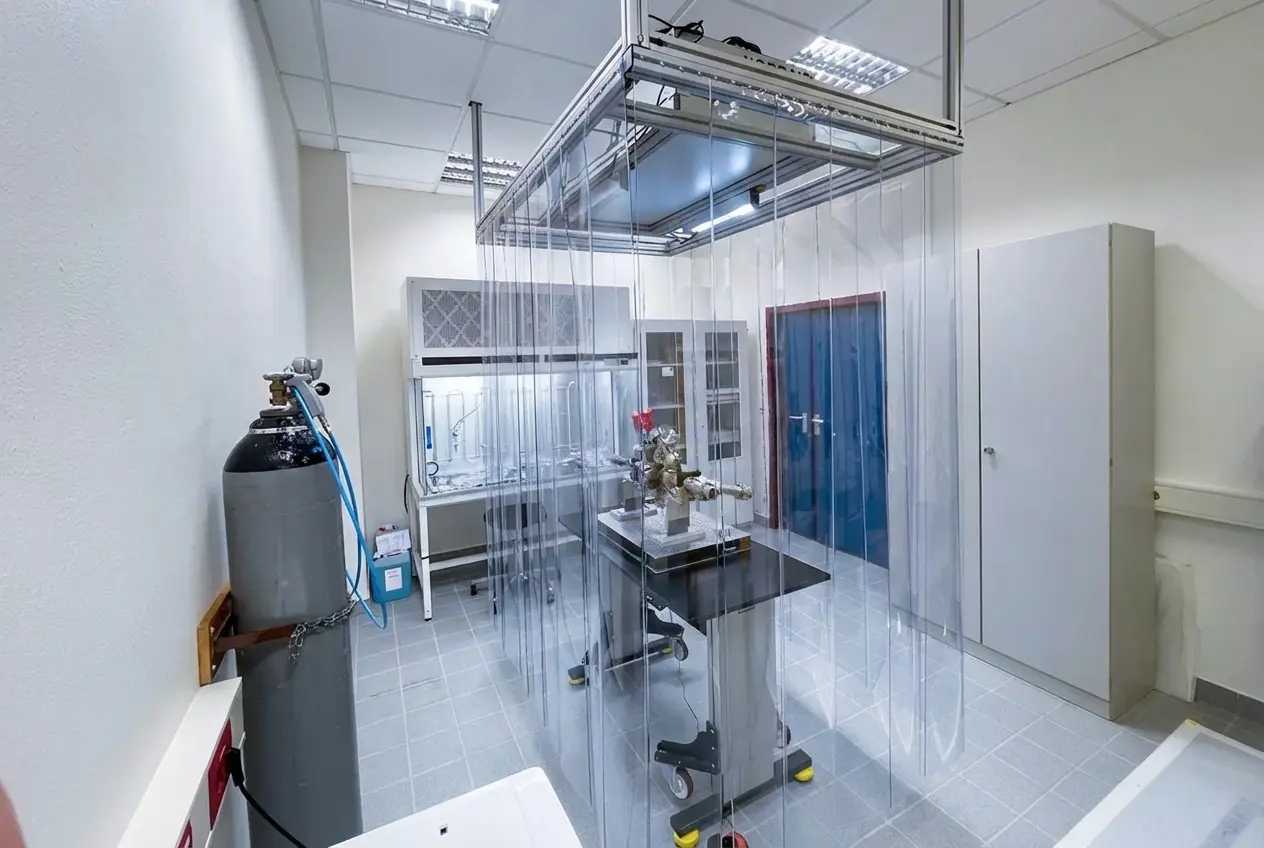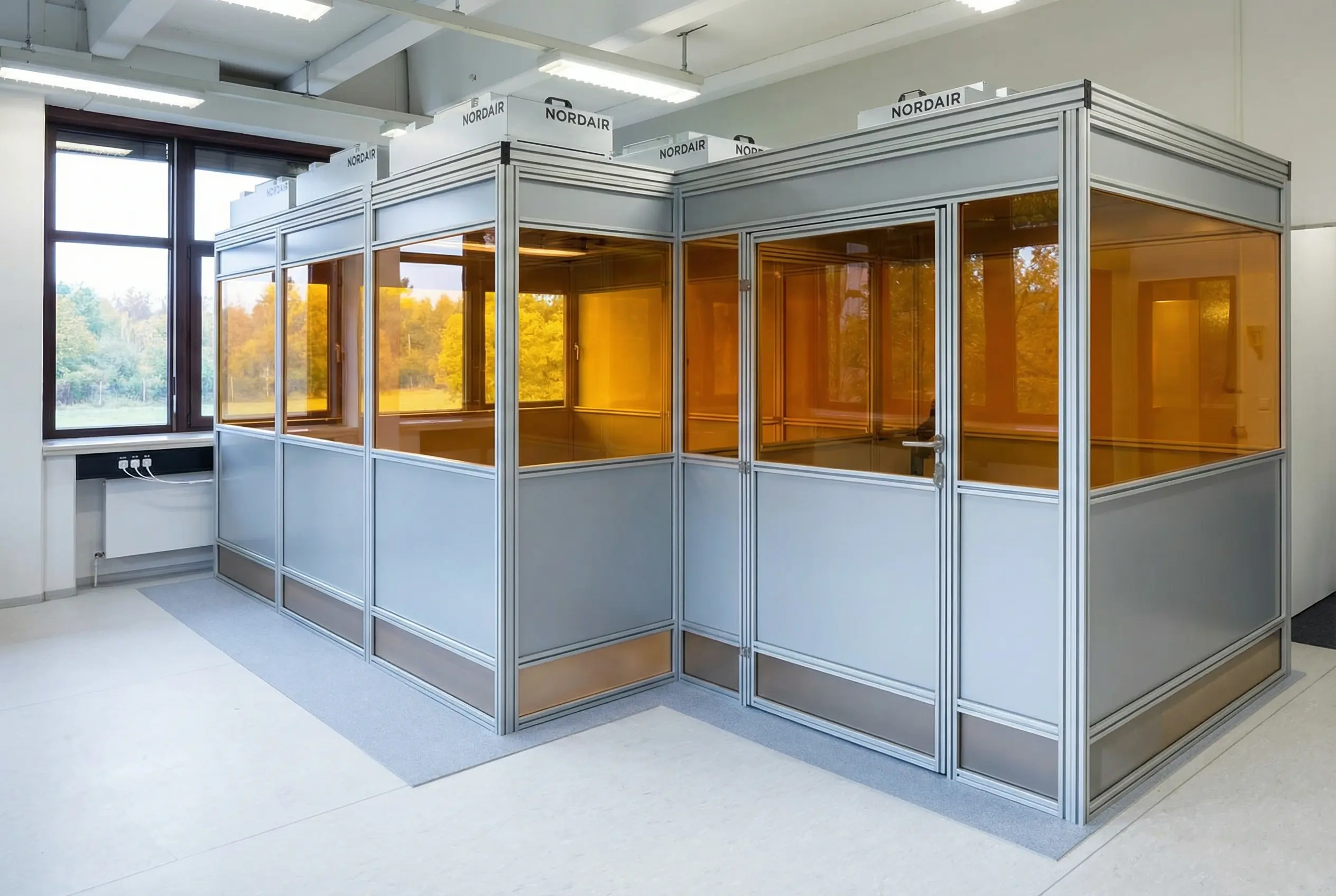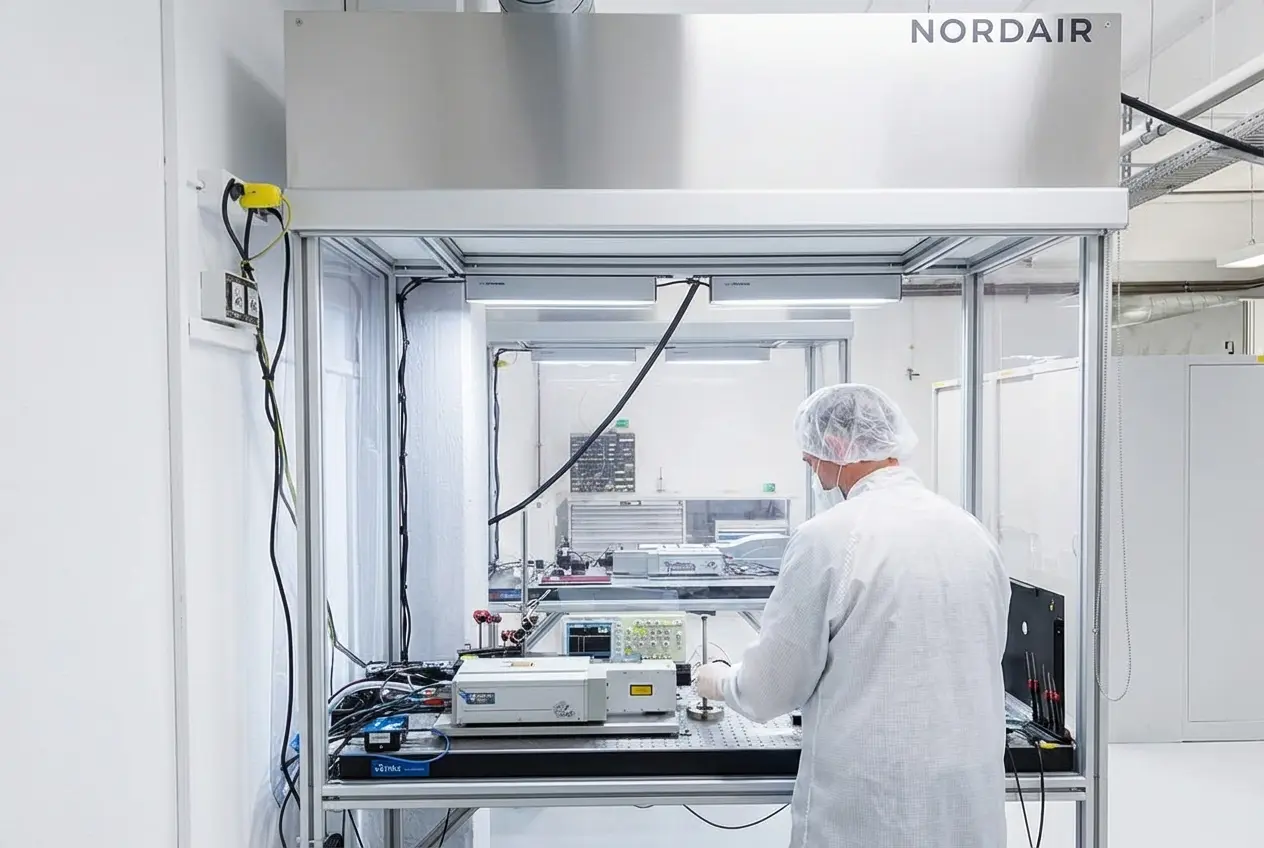We are pleased to actively support research in quantum information processing with ion traps at the University of Siegen with our cleanroom enclosure.
The research group led by Prof. Dr. Christof Wunderlich from Department of Experimental Quantum Optics deals with the construction of highly complex ion traps, which will operate a quantum computer on a small chip (surface trap) in the future.
The quantum computer at the University of Siegen is based on innovative MNGIC (MagNic Gradient Induced Coupling) technology. The ytterbium ions are arranged in a grid and cooled with a laser. The hyperfine structure levels are then manipulated using a magnetic field gradient. As a result, each ion has slightly different transition energies. Now all ions are irradiated with microwaves, not, as is usual, a single ion with a laser. The frequency is selected so that only a single ion specifically modified by the magnetic field is excited. The advantage of using microwaves is that the ions can be controlled much more scalably than with lasers. In addition, thanks to widespread use in smartphones and the like, high-frequency technology is already highly miniaturized and very inexpensive. This approach promises cost-effective miniaturization and scaling of the entire system, important prerequisites for a commercial quantum computer. Eight qubits are already being read using this approach: In total, the system will be scalable to a thousand qubits.
The qubits are produced in an ultra-high vacuum of 10-12 mBar held. The installation of the vacuum chambers is particularly sensitive to airborne contaminants, as even the smallest particles could interfere with the clean reading of the qubits. For example, the research group commissioned us to create the appropriate cleanroom workplace in a small laboratory. Since the vacuum chamber is quite solid, a height-adjustable work surface on rollers is important. In this way, the locked chamber can be easily brought to an optical table for installation. The complicated geometry of the vacuum chamber also requires access from all sides. Another challenge is limited space in the laboratory.
In close cooperation with the department, we opted for a cleanroom enclosure installed on the ceiling. This variant is not only particularly space-saving, but also allows access from all sides. The transparent curtains shield the interior of the cleanroom enclosure and, with the laminar flow from the filter fan unit, ensure maximum cleanliness for the assembly of the chamber. In addition, the curtains can be easily dismantled with the profiles to guide the mobile and height-adjustable table with the Honeycomb breadboard out of the tent and to the optical table.
We are proud to support the development of cutting-edge quantum computers with this solution and look forward to continuing to work with the University of Siegen in the future.


